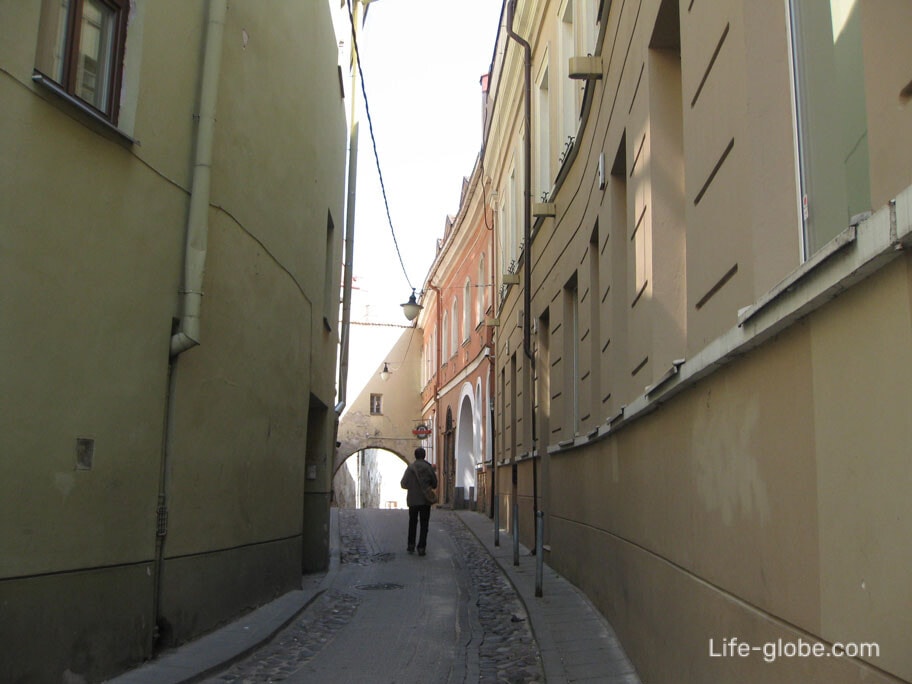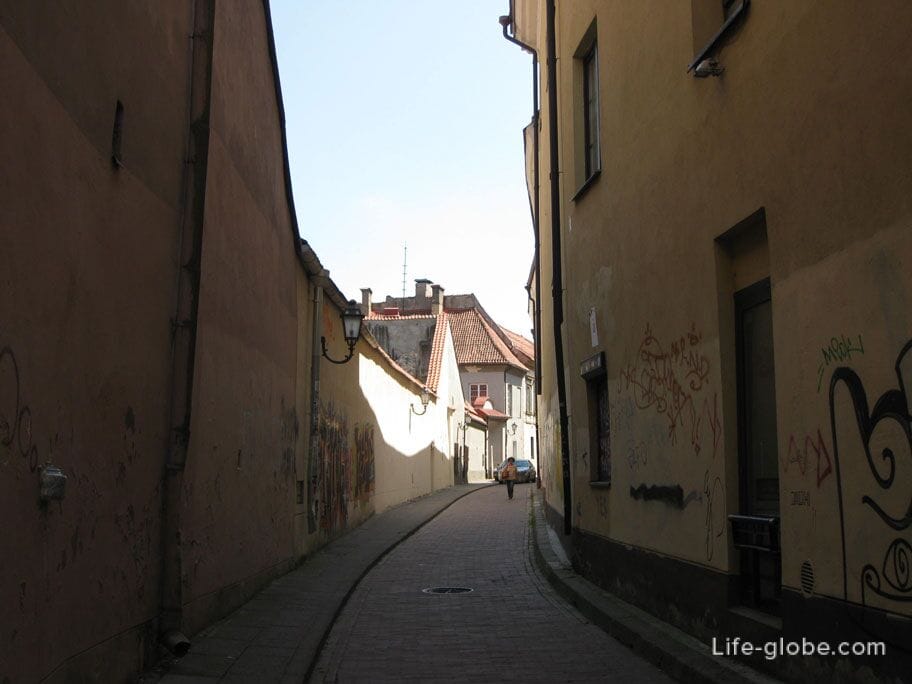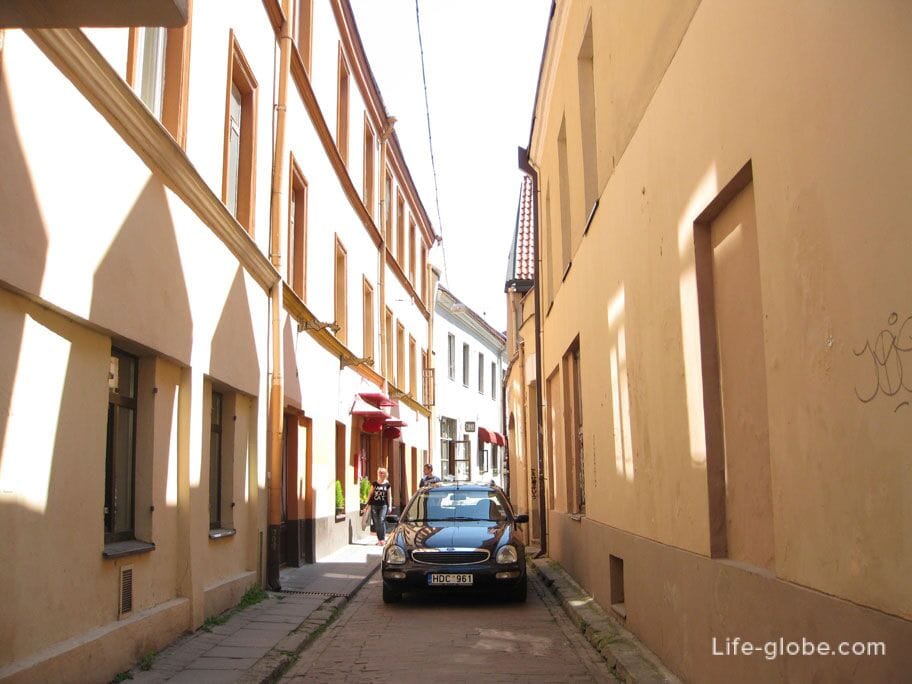
The old town of Vilnius it is called old town (Lithuanian name Vilniaus Senamiestis, Polish - Stare Miasto w Wilnie) is only a single district of the capital of Lithuania. This area is the oldest part of the city, preserving its history and architecture. Almost all the streets of the old city is completely pedestrian, narrow and paved with cobblestones and boulders.
In 1994 the old town was inscribed on the world heritage List of UNESCO.
Will be in Vilnius, even in passing, stroll through the streets of the old town, believe me, will be something to remember, for one will get acquainted with the history of the middle ages and more modern times. Besides, the old place of the Lithuanian capital recognized as one of Eastern Europe's biggest urban complexes. Here you see a beautiful and spacious square; the narrow and picturesque streets; cathedrals and churches - Catholic, Lutheran and Orthodox; museums, hotels, educational institutions and homes of various architectural solutions - Gothic, Renaissance, Baroque, classicism and even art Nouveau.
The Central streets of the historic part of the city lined with many cafes, pubs and restaurants. Many of them you can taste Lithuanian dishes.
It is in the old town are the main attractions of Vilnius. So arriving for a visit to the Lithuanian capital, feel free to go in its cultural and historical part - old town.
The old town originates from the most famous and important square of Vilnius – Cathedral square.
This spacious area housed such attractions as: the Cathedral of Vilnius, the bell tower at the Cathedral and the monument to Duke Gediminas established in the center of the square.
Near the square is the castle hill with Gediminas Tower. In the tower is the national Museum of Lithuania, and on the top floor is the observation deck.
For the castle hill stretches a Mountain Park that hosts a snow-white monument of Three crosses with a very interesting history.
All of this square with its attractions, the castle and the Park, we talked in an earlier article, read here.
Photo of Cathedral square. Right - Cathedral of St. Stanislaus and St. Ladislaus, at the Cathedral belfry, and right in the center - a monument to the Duke of Lithuania Gediminas.
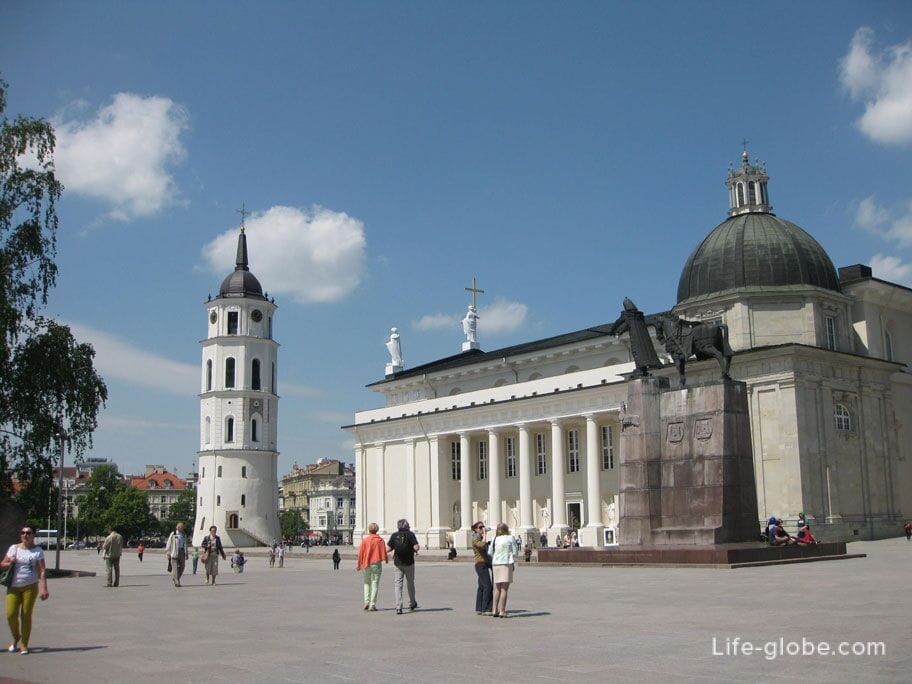
From this area originates in the Central street of the old town - Pilies (Pilies). The street is also called the Castle street (Zamkowa), and it is not casual, because as we remember, it originates from the Castle hill. In Soviet times the street was called Gorky.
Stepping on the street eyes opened to another world, so different from the usual modern cities. You're, like, doing a leap back in time. In General, we have a special fondness for the old cities of Europe, they are somewhat similar to each other, but at the same time, each has its charm and zest.
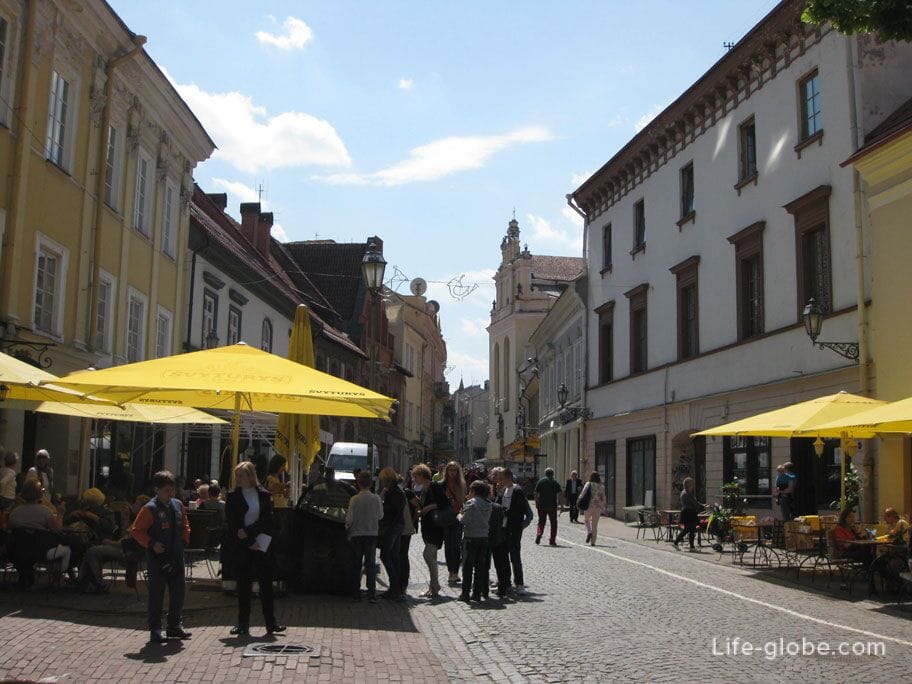
Go to the Church of St. Johns. The full name of the Church - the Church of St. John the Baptist and St. John the Evangelist. The Church building is included in the ensemble of Vilnius University. The Church was built in the Vilnius Baroque style and is a monument of architecture.
Near the Church of St. John stands one of the tallest buildings of Vilnius old town - a five-tiered bell tower. The Church and bell tower, has long remained the tallest building not only the old part of the city but the entire Vilnius. Thanks to the bell tower and the Church became the dominant architectural panorama of Vilnius.

Slowly walking on, go out to a small tent Bazaar with clothes and Souvenirs near the Pyatnitskaya Church or, as it is called, of the Church of the Holy Martyr Paraskeva. This is the Orthodox Church, she was the first Christian Church built of stone in the city.
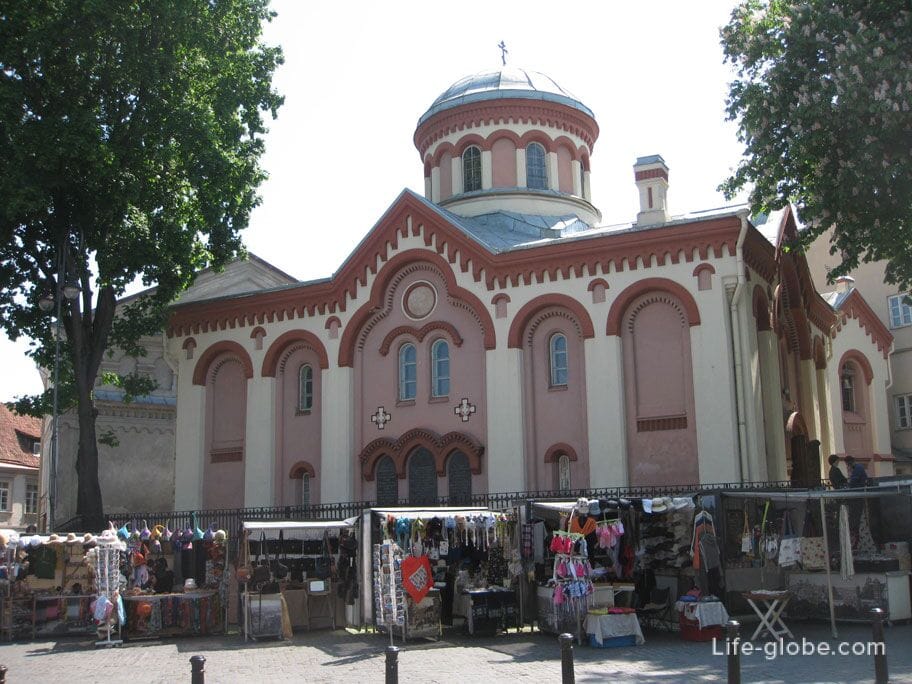
Near the Church there is a green area for walking and relaxation - Konstantino Sirvydo square. In the Park grows a lot of trees, installed benches for rest and a fountain.
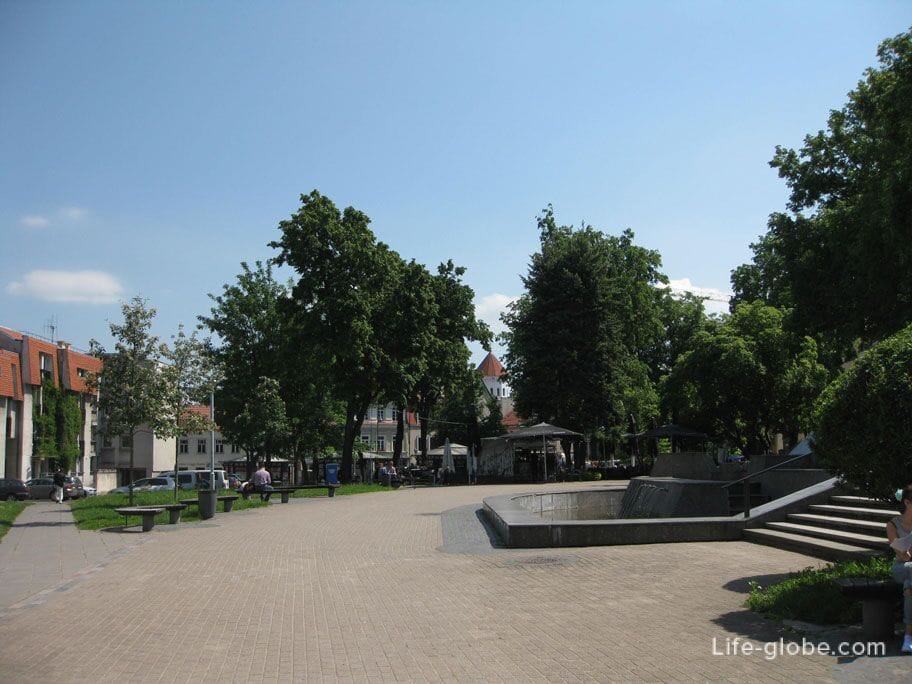

Slowly walking further down the street Pilies, imperceptibly, we come to the Central and most visited area of the old town - town hall square.
The area is quite spacious, has a triangular shape. In the center of the square placed benches for rest and coffee, and concentrated around a large number of attractions.
Erecting new buildings, they are so skillfully, and most importantly, harmoniously fit into the surrounding architecture that do not immediately pay attention to them, and if not amenable, then all will not notice, and can not be distinguished from the historic buildings of the past centuries. Well done to the Lithuanians, that they should learn.
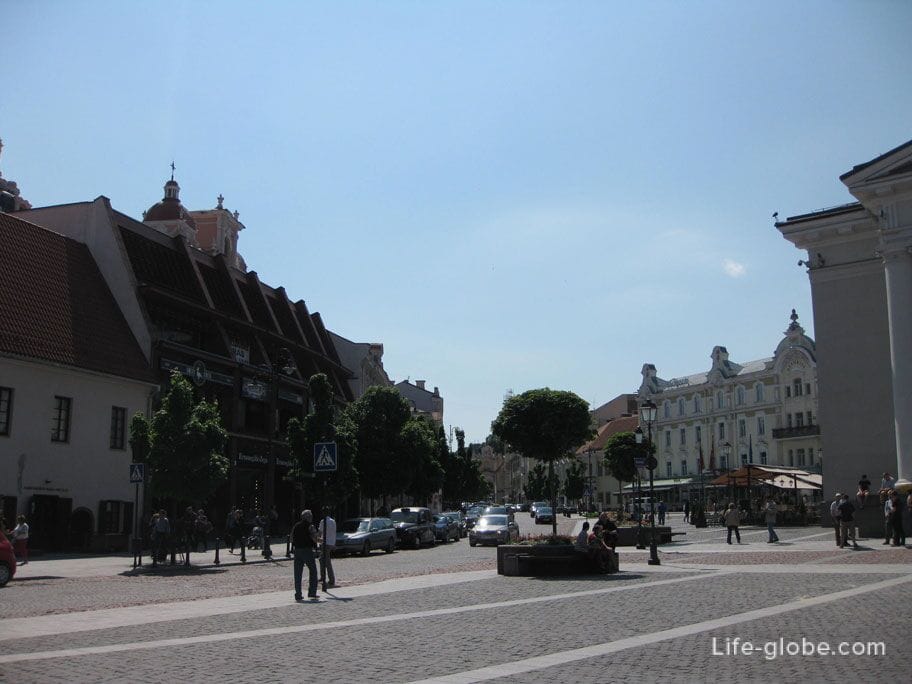
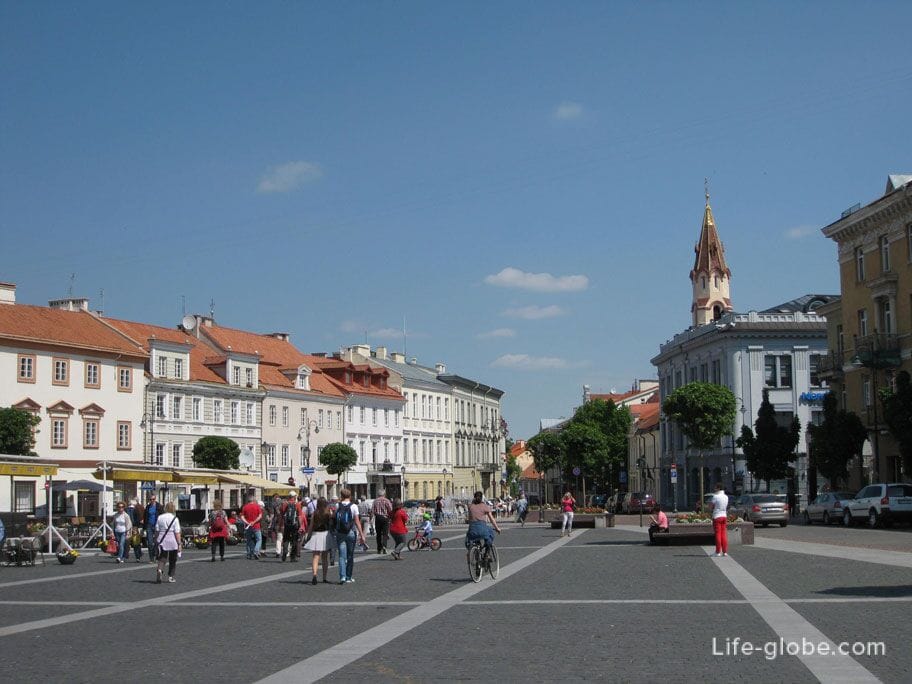
The name "town square" speaks for itself, the Central building of the square is the town hall.
The town hall was built in the classical style, so it stands out from the other buildings. Literally the town hall, means the house of Soviets.

Near the town hall is the Church of St. Casimir (Svento Kazimiero baznycia, koscioł Swetego Kazimierza). Currently it is a Roman Catholic Jesuit nerehtsky Church. But from 1840 to 1915, the Church was the Orthodox Cathedral of St. Nicholas.
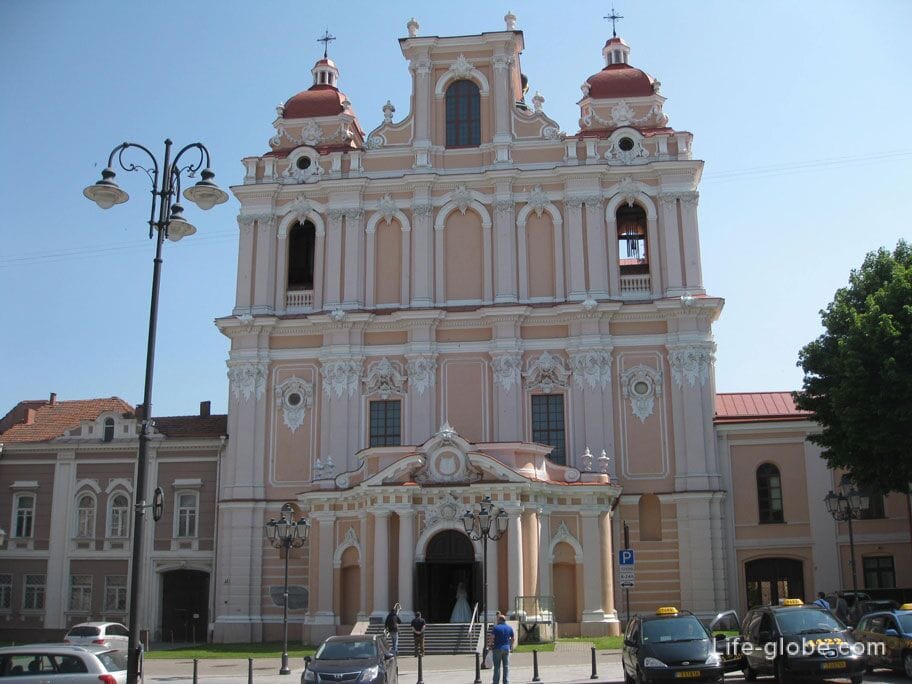
Walk on
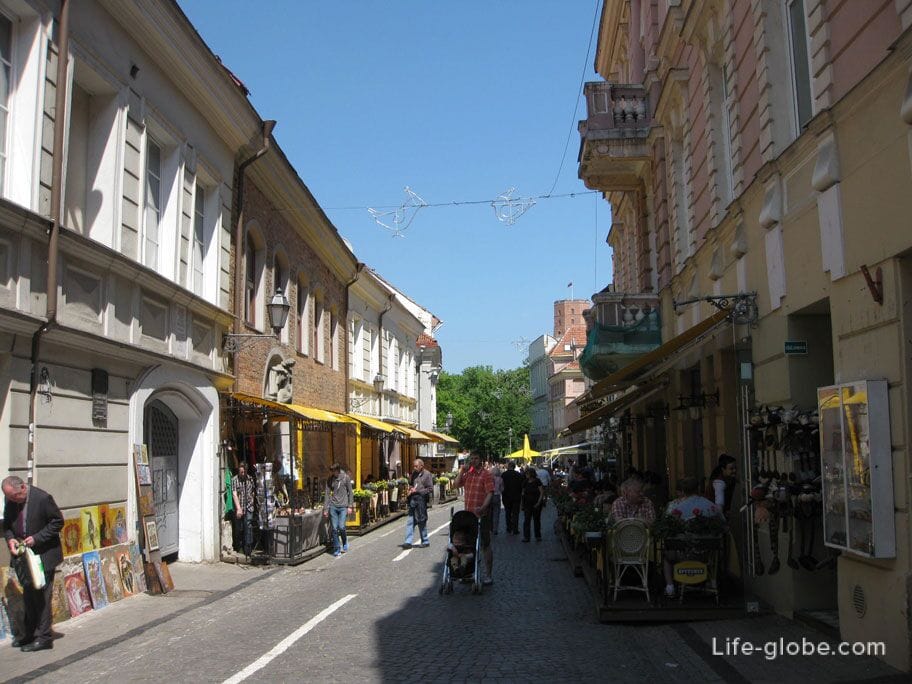
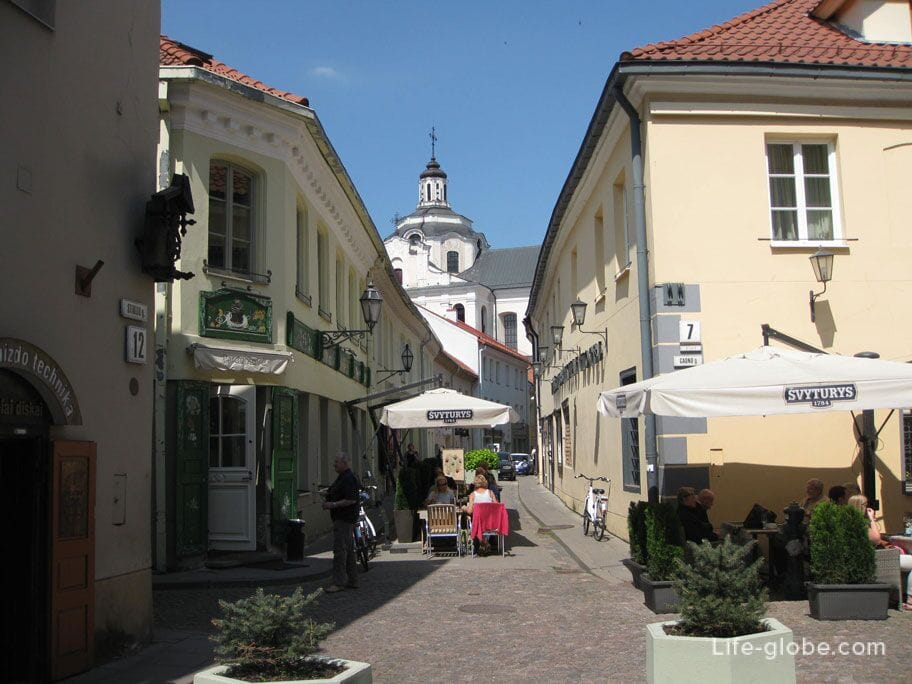

Go ahead and Dyvim there are still two churches standing next to the opposite sides of the street.
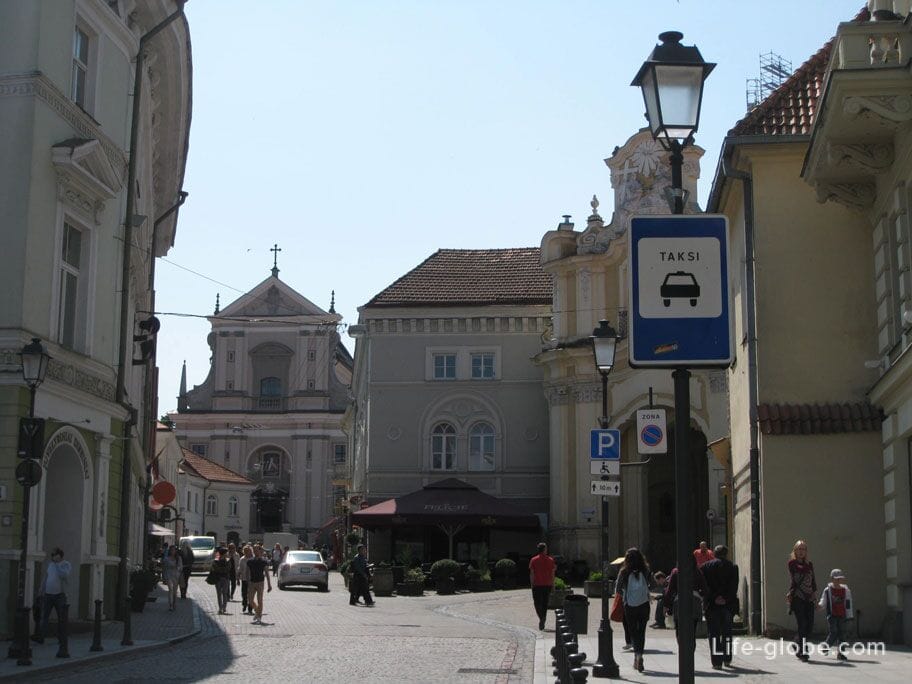
Church of the Holy Trinity and the Basilian monastery.
The Church of the Holy Trinity and the Basilian monastery, is valid to this day the Greek-Catholic Church in the name of the Holy Trinity and a former Basilian monastery.
In the photo the gates of the Church

Just a minute later came to the Church of St. Theresa.
The Church of St. Teresa or St. Theresa (Lithuanian name Sventos Teresės baznycia, Polish - koscioł Swiętej Teresy) is a parish of the Roman Catholic Church. Made in the Baroque style.
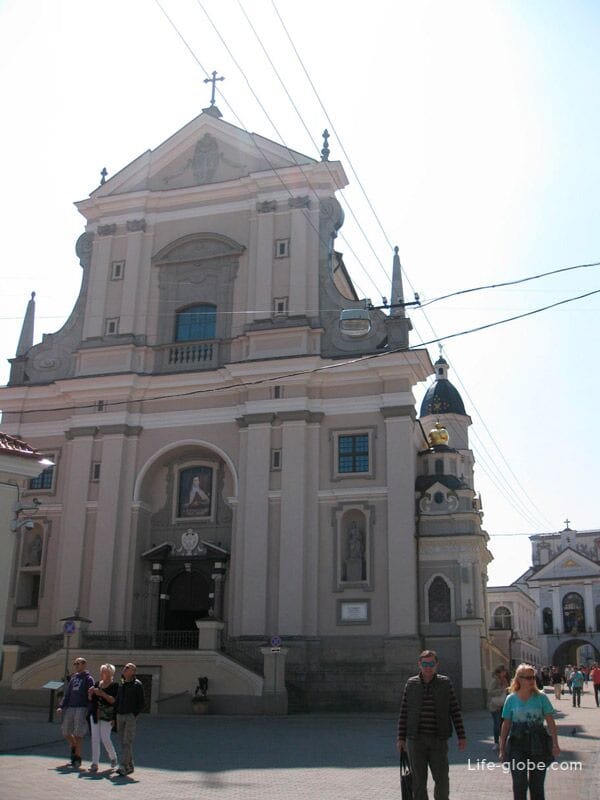
And again we go to the Church. Church Of The Holy Spirit. This temple in honor of the Descent of the Holy spirit to the apostles, is the most important Orthodox Church in Lithuania, a monument of history and architecture.
All churches and cathedrals in the old town of Vilnius so much that we are not interested in all, and stopped at the most impressive, beautiful or just any.

So we walked the entire old town by its main streets. Came to of God of mercy (Ausros, dawn) gate, through which you can go beyond the old town or Vice versa to go into the old town, looking at which side to start the walk.
It is the only surviving gate of the once surrounding the entire city of the city wall.
The gate of dawn or Sharp gate (the Lithuanian name of Ausros Vartai, Polish Ostra Brama) are one of the major attractions of the Vilnius tourist and religious pilgrimage, besides a monument of history and architecture.
Above the gate built chapel, where you can see the miraculous image of Mother of God of mercy.

But our walk does not end there. We will walk through the main streets of the old place and just admire it prikrasni.
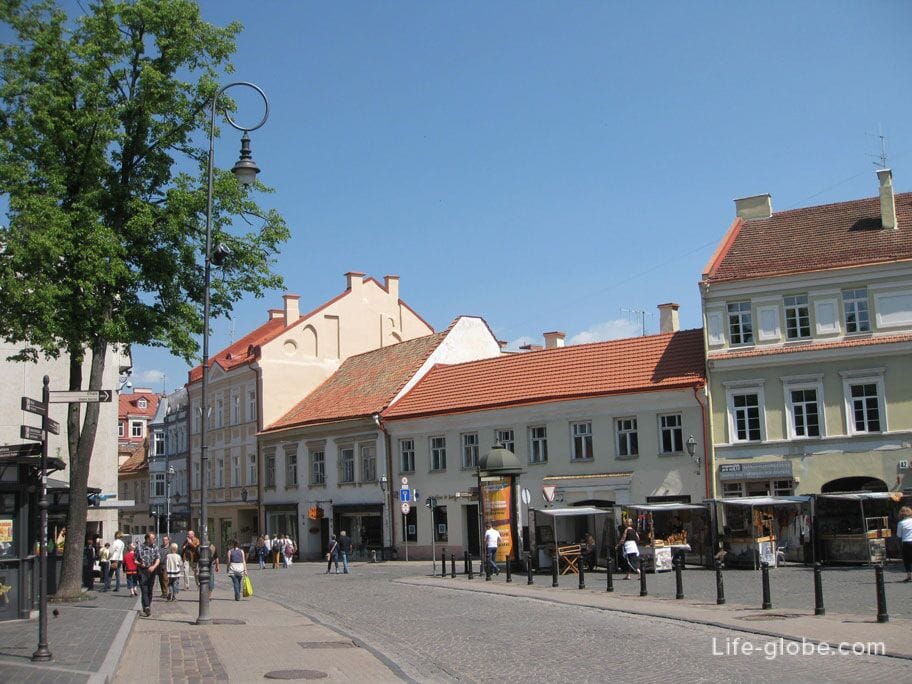
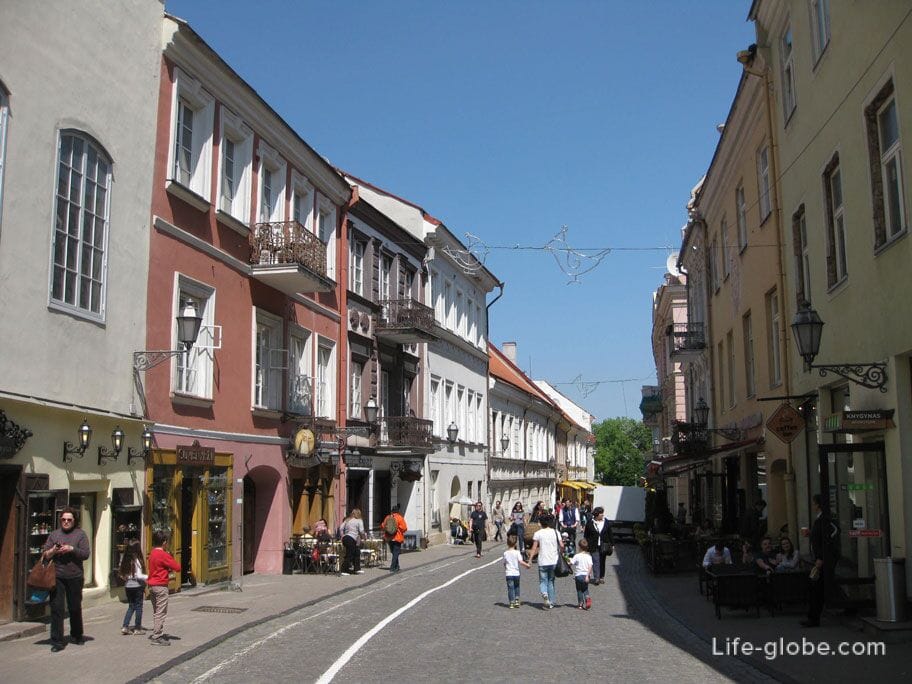

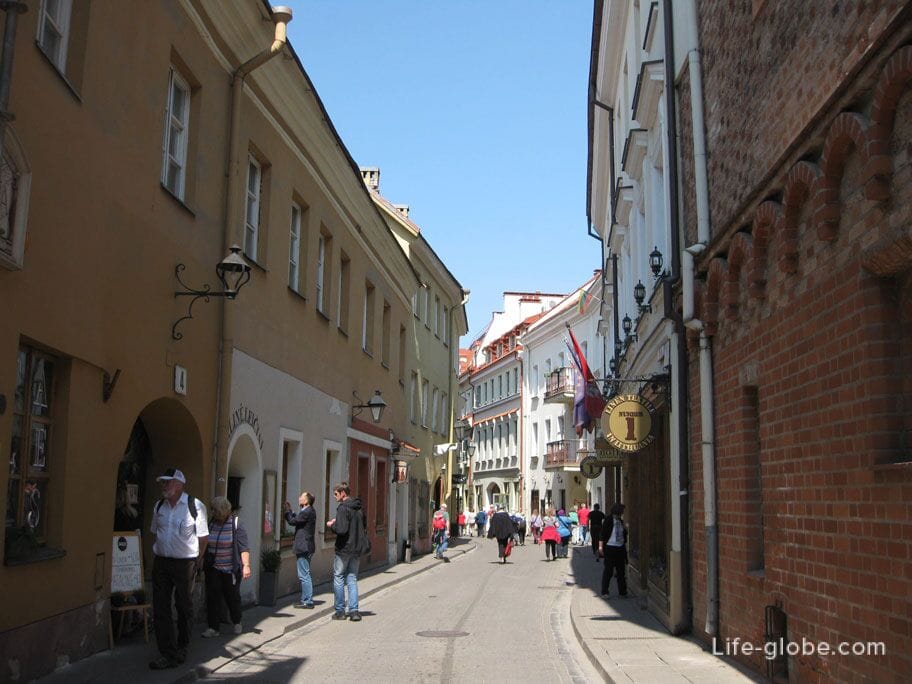
These are the cars you see in Vilnius. By the way something similar we saw in Kaunas

In addition to the comfortable main streets in the old town there are many narrow winding streets. They're not as clean and well maintained. Posharpanny and sometimes ornamented the walls of the old buildings on the contrast center of the streets does not create a very good impression.
To get into these narrow streets, walking along the centre of the old place, just roll into one of the side streets and you will immediately plunge into an old world of Lithuania.

